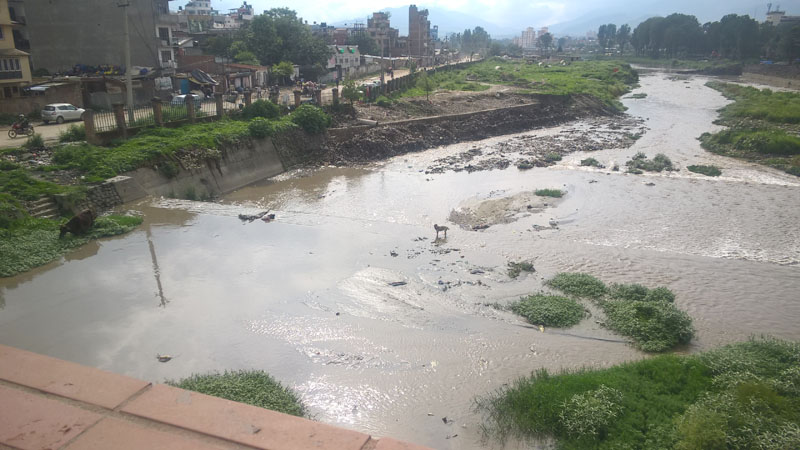Climate change impacts on Bagmati under study
Kathmandu, November 11
Young scientists are conducting a long-term research on the impact of climate change on aquatic life in the Bagmati River. The five-year study, which began in April 2015 will conclude in April 2020.
According to supervisor of the research programme Deep Narayan Shah, apart from citizen science, different scientific methods are being applied to study macro-invertebrates diversity, and physico-chemical and hydro-morphological variables to understand the temporal and spatial variation in these areas, and the impact of climate change.
“We have been collecting ground data such as speed of water flow, volume, temperature, among other things,” Shah told The Himalayan Times, adding, “In order to address ecological and hydrological data gaps, the team is collecting data along the Bagmati and Nagmati rivers within the protected areas of Shivapuri.”
He added the current research aims to develop a baseline understanding of watershed hydrology and freshwater biodiversity so that the likely impacts of climate change can be observed, modeled and communicated to the community. “This would help characterise the likely effects on livelihoods and collectively develop locally appropriate adaptation and mitigation strategies,” Shah said.
Apart from locals, the research team comprises young scientists, Shah, Ram Devi Tachamo Shah and Jeff Davids are participating in the field and laboratory work.
Two monitors living within the Nagmati and upper Bagmati watersheds have been hired to periodically take photographs of spring discharge, river discharge and precipitation. The main benefit of using locals is that the community is involved in monitoring activities.
Researchers said ecologic and hydrologic data will then be jointly analysed to determine the eco-hydrology linkages and to develop baseline information on ecosystem services.
Headwater streams of the Bagmati River are located within the Shivapuri-Nagarjung National Park, approximately 15 kilometers north-east of Kathmandu. The water diverted in the upper catchment at Shivapuri-Nagarjung National Park directly provides water for drinking and household activities to one third of the total population of Kathmandu Valley.
The catchment provides habitats for many wild animals including leopards, herpeto-faunas, birds, fishes and aquatic insects.






